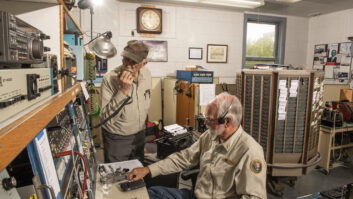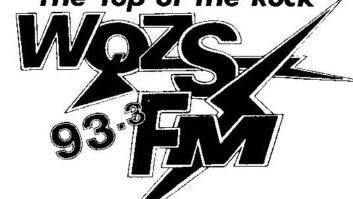Lovers of “classic” radio gear and facilities should visit the website of the Maritime Radio Historical Society to view Bruce Ecker’s panoramic views of the KPH/KSM transmit and receive sites. I’ll give you the link in a moment.
This is not a broadcast facility but rather a coastal station that was involved in maritime communications. That station, KPH, is located in the Point Reyes Nation Seashore preserve, north of San Francisco.
KPH has roots dating to the early 20th century; it was relocated from San Francisco, following the 1906 earthquake that devastated that city. (The call sign is said to have stemmed from the Palace Hotel where the operation was once headquartered.)

Here’s an image from the website. To get the full panoramic tour, though, follow the link at the end of this article.
It was later acquired by RCA, and those with a keen eye will be able to spot some of that company’s gear in the very detailed photos available on the website.
Following the gradual decline in the radiotelegraphic commercial maritime communications in the age of satellite and computerized data communications, the station was acquired by owners of another such West Coast communication facility, Globe Wireless. Following the 1997 acquisition, KPH subsequently was retired from active service.
Fortunately, former wireless operators and volunteers, operating as the Maritime Radio Historical Society, have kept the facility from being dismantled and scrapped. It still lives on and the website photos clearly reveal the fruits of these volunteer efforts.
Virtually every operating and maintenance area of the station building has been captured through these photographs.
They’re unusual too, in that a site visitor can manipulate his/her viewing perspective by zooming, planning and tilting controlled by the computer mouse thanks to the Pano2VR player. It’s really a virtual reality sort of display — you can even look up at the ceiling lighting fixtures or the floor tiles. (Just don’t go panning or tilting too fast, as vertigo can result!)
Virtual tour visitors easily can pick out both vintage and more modern gear that made up the station. In addition to the transmitter gallery (look for the RCA “meatballs”), there’s the maintenance shop with its tools and construction/repair materials.
A storage area shows the ranks of spare tubes, capacitors and transformers kept in readiness. There are plenty of Teletype machines represented, ranging from 1930s vintage to some of the last machines that company produced.
Of particular interest is the “CW Operating Position,” with a stack of “Marconigram” message forms alongside a vintage typewriter and hole-punch. Visible too are the temporary files for received messages. Judging from the number of bins, KPH must have handled a really large amount of traffic during a typical day’s operation. A nice touch too in this photo is the operator’s jacket bearing “RCA Global Communications” on its back above the large “meatball” company logo.
Another photo allows website visitors to enter “the SITOR room,” chock full of the more modern computer terminals and printers that were employed in the final years of the station’s operation.
There’s even a portal to the outside where transmission line feeders can be inspected close-up.
All in all this website is a “must visit” for radio yesteryear junkies — the scenes are so real that you can almost smell the aroma of insulation and other olfactory cues from other transmitter and power system components.












